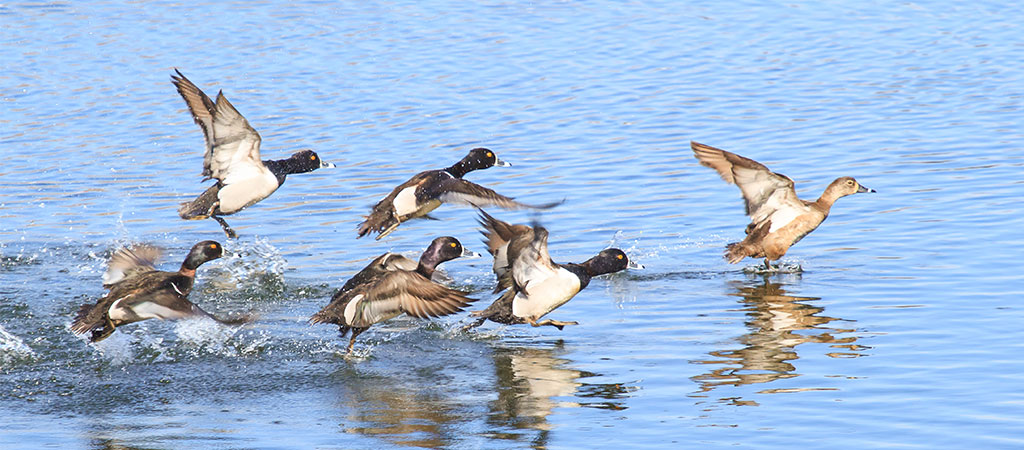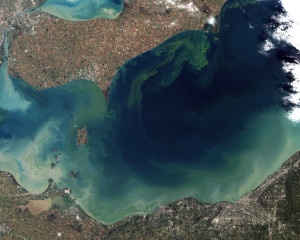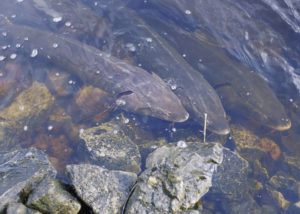We have much more to do and your continued support is needed now more than ever.
Working for Clean Water
This Week in NWF History

Since 1936, the National Wildlife Federation has worked to conserve the nation’s wildlife and wild places. As part of our 80th anniversary celebration, we are recognizing important moments in our history that continue to make an impact today.

On May 27, 2015, streams and wetlands across the country were given vital protections under the Clean Water Rule. The National Wildlife Federation CEO Collin O’Mara joined our D.C. affiliate, the Earth Conservation Corps, EPA Administrator Gina McCarthy, Assistant Secretary of the Army for Civil Works Jo-Ellen Darcy, and Managing Director of the Council on Environmental Quality Christy Goldfuss to celebrate as this huge win for wildlife was signed into action.
This historic event ensured that certain Clean Water Act protections were restored for more than two million miles of streams, millions of acres of wetlands, and for one-third of all Americans who receive their drinking water from these sources.

Today, the National Wildlife Federation continues to lead efforts to support and strengthen the Clean Water Rule, protecting and preserving the nation’s water resources. Across the country, lakes, streams, estuaries, tributaries, and other water resources provide vital wildlife habitat, drinking water, and opportunities for wildlife viewing and outdoor activities.
Given the ever-increasing demands on our waters, we must continue to protect and restore these precious resources and the beneficial functions they offer. Climate change is drastically altering the water cycle as we know it, bringing more intense storms, floods, droughts, and sea-level rise, as well as reduced habitat for many species.
How Can We Help?
The National Wildlife Federation and a group of diverse national partners have taken charge of priority water projects across the country. A few of our most important efforts include:
-

Great blue heron and the fish they need to eat rely on the Clean Water Rule to protect their habitats. Photo by Jo Lynne Jones, National Wildlife Photo Contest Restoring common-sense protections of the Clean Water Rule to smaller streams and the wetlands next to these streams through continued action on Capitol Hill and the courts. These waters were once clearly protected by the Clean Water Act, but two controversial Supreme Court decisions left these protections in doubt.
- Coordinating the Water Protection Network to help hundreds of organizations and community leaders understand and influence federal water policy to ensure water projects and policies are economically and environmentally sound.
- Leading a campaign to prevent the Army Corps of Engineers from constructing the destructive, unnecessary and costly New Madrid Levee Project on the Mississippi River.
- Working to enact new national water planning guidelines that are more wildlife-friendly and preserve intact ecosystems to feed our economic growth. Proactive solutions to water planning will help to buffer our communities from increasing threats from climate change, rather than the piecemeal, project-by-project approach taken thus far.
- Helping keep people and wildlife out of harm’s way by promoting natural, more effective solutions to flood control. The National Wildlife Federation works at the local and national level to prevent development along floodplains and actively advocates for reforming the National Flood Insurance Program so that flood insurance rates better reflect real risk.
-

The Clean Water Rule helps protect wildlife like sturgeon that live in the Great Lakes. Photo by Eric Engbretson, USFWS Spearheading national coalitions, such as the Healing Our Waters coalition in the Great Lakes. This group of about 130 organizations promotes finalization of the Clean Water Rule and continues to monitor the rule, which clarifies the protection of over 30 million people living in or near the Great Lakes, most of whom directly use the five lakes for drinking water. The Clean Water Rule was needed so we can manage pollutants going into drinking waters and better protect wildlife and communities.
Take ActionDon’t let this victory be undone. Urge Congress to stand firm against attacks on the new Clean Water Rule.






















